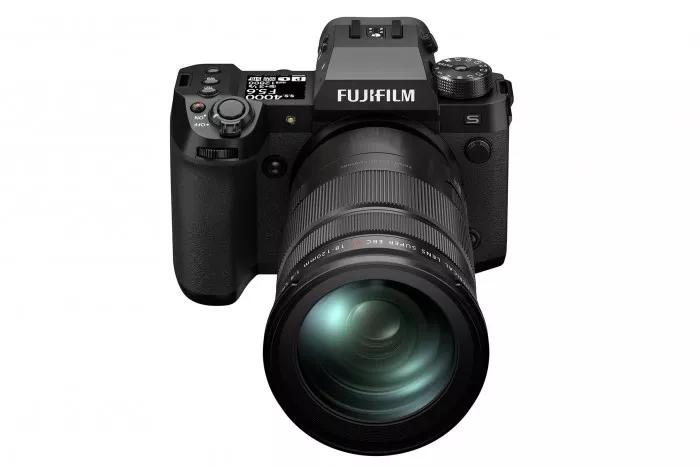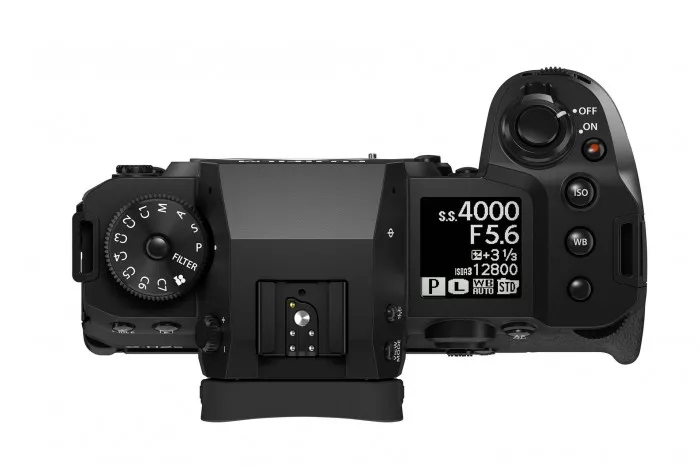During the x-summit event held in the Japanese palace on Tuesday, Fujitsu brought several new announcements for its X-Series APS-C no anti product line, including two cameras and two new lenses The first is the x-h2s camera equipped with 26mp sensor. As the successor of the x-h1 launched in 2018, Fuji calls it a new generation of high-speed flagship model. The machine is scheduled to arrive in early July. The price of the bare metal machine (excluding the lens) is $2499 (about 16700 RMB).

Fuji x-h2s with 18-120mm high power zoom lens
Along with Fuji x-h2s, there are two zoom lenses. The first is the XF 150-600mm ultra long zoom lens priced at US $1999 (about 13400 RMB), and the second is the XF 18-120mm electric zoom lens priced at US $899, which is scheduled to be launched in mid September.
As for another x-h2 camera, Fuji disclosed that it is equipped with a new 40mp non stacking sensor (to be arrived in September). In addition, these new cameras are more professional than other models in the Fuji X series camera family.
It can be seen that it has abandoned the classic shutter speed / ISO dial and adopted a more modern PSAM dial scheme. Even though the resolution of x-h2s is only 2MP more than that of its predecessor, it has been greatly improved in terms of speed, AF tracking, mixed video shooting, etc.

X-h2s improves the rear dial design, and the button design is more rubber reinforced.
In terms of sensors, the new 26mp back illuminated APS-C stack design can achieve faster readout speed. The electronic shutter supports shooting up to 40 FPS while maintaining continuous automatic focus. Unlike the Nikon Z9, the x-h2s has a mechanical shutter, although it only supports continuous shooting up to 15 FPS.
In order to speed up, Fuji has also equipped the x-h2s with a fifth generation X processor with a main frequency of 1 GHz, and another 600 MHz sub processor is dedicated to the newly introduced five axis anti shake system. The official claims that there are seven levels. In contrast, the peak frequency of the fourth generation processor on the old machine is only 608 MHz.
In recent years, the auto focus system supporting real-time object tracking has made great progress, and the newly discovered "dynamic space" has also proved to be crucial, which means that Fuji is trying to catch up with the latest products of Sony, Canon and Nikon.
The calculation amount of x-h2s auto focusing is three times that of Fuji x-t4. The company claims that the new deep learning AI can detect objects and track faces, eyes, animals, birds, cars, bicycles, planes, and trains.

There are more buttons on the top of x-h2s than x-h1, but there is only one dial for mode selection.
In area AF mode, the camera will focus on the subject close to the center of the picture - ideally, the photographer can better highlight the protagonist from a group of people.
Since x-h2s is specially designed for mixed photo / video experience, fully articulated 3-inch @ 1.62 million point LCD screen + 5.76 million point electronic viewfinder (EVF) with magnification of 0.8 is more practical.
As a reference, the x-h1 viewing angle of the double hinged LCD screen is more limited, and the magnification of the 3.69 million point electronic viewfinder is only 0.75. In addition, x-h2s introduces a long-awaited headphone jack to match its 3.5 mm microphone port.
Even better, the USB port has also been upgraded from micro to type-C, and users can use the camera as a webcam without additional software.

Ventilation mesh design with optional fan on the back of the camera (hidden at the bottom of the screen)
In terms of video specifications, Fuji x-h2s supports 6K @ 30fps, 4K @ 120fps and 1080p @ 240fps, and internally supports storing files in apple prores format to the cfexpress type B primary card slot (the secondary card slot is a more typical SDXC uhs-ii specification).
It is worth mentioning that the new f-log2 video profile allows up to 14 dynamic ranges. In terms of recording time, the camera can shoot at 4K @ 60fps for 240 minutes at 25 ℃ (77 ℉), but it can only last for 20 minutes at 40 ℃ (104 ℉).
If necessary, users can purchase fans [accessories] for $199( https://microsoft.pvxt.net/Xx07X ) , to more than double the high-temperature recording time (to 50 minutes). Prior to this, we have never seen a similar plug-in solution provided by competitive products at the same level (original factory built-in / third-party magic modification is more common).

The 150-600mm ultra long zoom lens, combined with the range increasing mirror, can be equivalent to 1800mm full frame.
Back to the front of the fuselage, Fuji provided two new zoom lenses for x-h2s. First of all, XF 150-600mm f/5.6-8 r LM OIS WR focuses on ultra long focus instead of pursuing the brightest aperture. The full frame is equivalent to 229~914mm, and all zooming is completed in the lens barrel.
The second is the XF 18-120mm f/4 LM PZ WR electric lens that supports more smooth zoom. However, Fuji has also planned the subsequent versions of XF 56mm f/1.2 II, XF 30mm f/2.8 macro and XF 8mm f/3.5. Interested friends can pay attention to the announcement later this year.
In September, Fuji will also launch an x-h2 model without an "s" tail. You can regard it as a 40mp sensor version of x-h2s. It is not difficult to guess that the two cameras will have a lot in common. However, in addition to the resolution, more details about x-h2 are not yet clear.